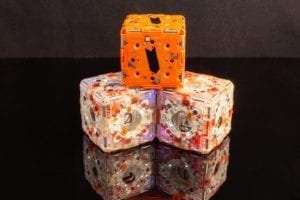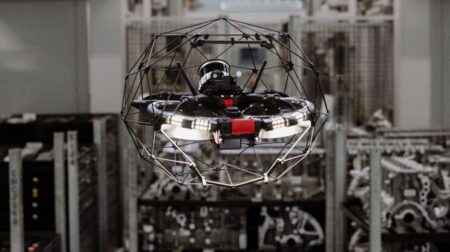A team from MIT’s Computer Science and Artificial Intelligence Laboratory (CSAIL) has developed self-assembling robotic cubes that can climb over and around one another, leap through the air, and roll across the ground.
Six years on from the project’s initial iteration, the robots can now communicate with each other using a barcode-like system on each face of the block that allows the modules to identify each other. The autonomous fleet of 16 blocks can now accomplish simple tasks or behaviours, such as forming a line, following arrows, or tracking light.
Inside each modular M-Block is a flywheel that moves at 20,000rpm using angular momentum when the flywheel is braked. On each edge and every face are permanent magnets that let any two cubes attach to each other.
“M stands for motion, magnet, and magic,” said MIT professor and CSAIL director Daniela Rus. “’Motion’, because the cubes can move by jumping. ‘Magnet’, because the cubes can connect to other cubes using magnets, and once connected they can move together and connect to assemble structures. ‘Magic’, because we don’t see any moving parts, and the cube appears to be driven by magic.”

The team envisions strong applications in inspection, and eventually disaster response. Beyond inspection and rescue, CSAIL researchers also imagine using the blocks for gaming, manufacturing, and health care.
While the mechanism is intricate on the inside, the exterior enables more robust connections. “The unique thing about our approach is that it’s inexpensive, robust, and potentially easier to scale to a million modules,” said CSAIL PhD student John Romanishin, lead author on a new paper about the system.
“M-Blocks can move in a general way. Other robotic systems have much more complicated movement mechanisms that require many steps, but our system is more scalable.”
Romanishin wrote the paper alongside Rus and undergraduate student John Mamish of the University of Michigan. They will present the paper on M-Blocks at IEEE’s International Conference on Intelligent Robots and Systems in November in Macau.
The project was supported, in part, by the National Science Foundation and Amazon Robotics.








